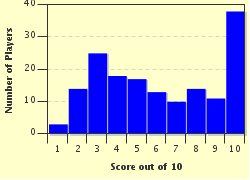Quiz Answer Key and Fun Facts
1. The author of this unfinished novel (published in 1926) requested that all his work be destroyed on his death, but luckily for us, his friend ignored the author's wishes and sought publication of his novels, none of which were finished.
Which novel starts with the following line?
"It was late in the evening when K. arrived."
2. This Portuguese novel (published in Portuguese in 1982, 47 years after its author's death) is apparently the "factless autobiography" of Bernardo Soares, one of the author's many personas that he called "heteronyms". Despite the lack of facts, the musing and meandering tell us quite a lot about Soares.
Which novel starts with the following line?
"I was born in a time when the majority of young people had lost faith in God, for the same reason their elders had had it - without knowing why."
3. This novel (published in 1960), written by a Polish author who spent over twenty years in Argentina, follows two middle-aged intellectuals in rural Poland as they endeavor to get two youngsters, who hold no interest to each other, together in amorous liaisons. The author's obsession with youth was also explored in his other great novel, "Ferdydurke" (1937).
Which novel starts with the following line?
"I shall tell you about another experience I had, undoubtedly the most fatal of all."
4. This short story (published in 1842) tells the sad tale of a scruffy government clerk who is mocked by his co-workers. It has been turned into a play, a ballet and a few films. The author, who was an ethnic Ukrainian born in the Russian Empire, is one of the bigwigs of Russian literature.
Which novel starts with the following line?
"In one of our government departments...but perhaps I had better not say exactly which one."
5. This novel (published in 1884), a classic of decadent literature, revolves around the lifestyle of a chronic aesthete and his withdrawal from Parisian society. Whilst applauded by many of his contemporaries, including Oscar Wilde, it upset the author's mentor Émile Zola, and caused a rupture in their friendship.
Skipping the prologue, which novel starts with the following line?
"Over two months had elapsed before des Esseintes could immerse himself in the peaceful silence of his house at Fontenay, for purchases of all sorts still kept him perambulating and ransacking the shops from one end of Paris to the other."
6. This novel (published in 1963) is split into twenty short tales which represent the cycle of the seasons, hence its secondary title, "The Seasons In The City". The tales follow the plight of a country-bumpkin simpleton as he tries to get used to city life. Its Cuban-born Italian author was also a prolific essayist and journalist.
Which novel starts with the following line?
"The wind, coming to the city from far away, brings it unusual gifts, noticed by only a few sensitive souls, such as hay-fever victims, who sneeze at the pollen from flowers of other lands."
7. The reputation of this novel's author (published in 1889) has been tarred by his fascist political leanings, and military career. He is a prominent figure in fin-de-siècle decadentism. He also wrote "The Triumph of Death" and "The Maidens of the Rocks". Which novel starts with the following line?
"Andrea Sperelli dined regularly every Wednesday with his cousin the Marchesa d'Ateleta"
8. This Czech novel (published 1979) is actually seven separate narratives that don't overlap, but that are joined together by common themes.
Which novel starts with the following line?
"In February 1948, Communist leader Klement Gottwald stepped out on the balcony of a Baroque palace in Prague to address the hundreds of thousands of his fellow citizens packed into Old Town Square."
9. This novel (published in 1867) is considered its French naturalist author's first major novel, and it anticipates his/her major body of work, a twenty-novel series called "Les Rougon-Macquart".
Which novel starts with the following line?
"At the end of Rue Guénégaud, if you follow it away from the river, you find the Passage du Pont-Neuf, a sort of dark, narrow corridor linking the Rue Mazarine to the Rue de Seine."
10. Ok, this time I'll tell you this novel's author: Fyodor Dostoyevsky. Which Dostoyevsky novel starts with the following line?
"Towards the end of November, during a warm spell, at around nine o'clock in the morning, a train of the Petersburg - Warsaw line was approaching Petersburg at full steam."
Source: Author
thula2
This quiz was reviewed by FunTrivia editor
agony before going online.
Any errors found in FunTrivia content are routinely corrected through our feedback system.

